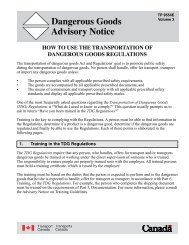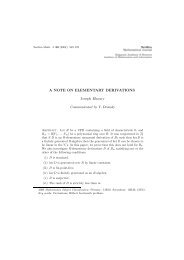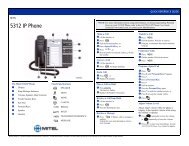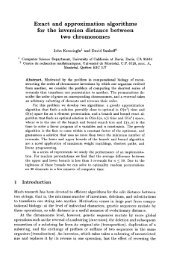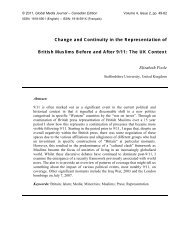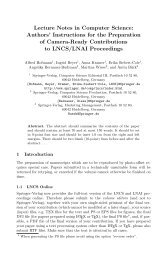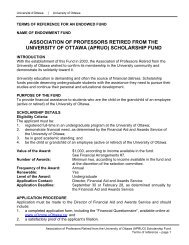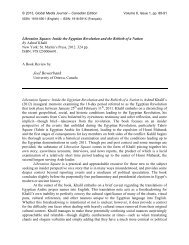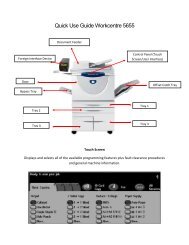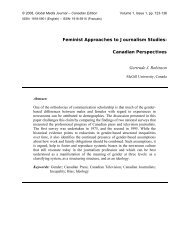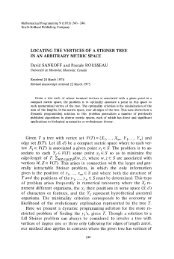PRACTICING PRECAUTION and ADAPTIVE MANAGEMENT ...
PRACTICING PRECAUTION and ADAPTIVE MANAGEMENT ...
PRACTICING PRECAUTION and ADAPTIVE MANAGEMENT ...
- No tags were found...
Create successful ePaper yourself
Turn your PDF publications into a flip-book with our unique Google optimized e-Paper software.
This population model provides the basis for the exploitation rate applied to the estimatedpopulation that determines the TAC decision. The first analysis examines the fit of the VPAmodel to the data (“retrospective analysis”), <strong>and</strong> the second incorporates the data variability withthe impact on the range of TAC values under expected exploitation rates (“risk analysis”).II.B.1 Retrospective AnalysisThe appropriateness of the VPA model for stock abundance estimation is critical to thedevelopment of the TAC decision. The use of the VPA is argued from model performancemeasures referred to as “retrospective analysis”. The retrospective analyses examine the yearover-yearadjustments to the age aggregated abundance estimates. When differences areobserved to be consistent over several annual time periods, e.g., the abundance estimates of yeart in year t-1, turn out to be higher than the year t estimates in year t <strong>and</strong> year t+1, etc., then themodel is said to exhibit an overestimation bias. Trends of this kind are an indication to decisionmakers that estimates in the current year may in fact be overestimates that should be expected tobe adjusted downward in future years. For example, the 2002 <strong>and</strong> 2003 haddock stock VPAestimates tend to exhibit a “retrospective pattern” whereby biomass estimates tend toward overestimationof population abundance in the most recent year, particularly when strong year classesoccur - as has been the case for the recent period in this stock <strong>and</strong> the high recruitment of 1999 to2001 (Fig 3).The cod SSR in 2002 also reports a “marked” retrospective problem that had existed inthe estimates for this stock since 1998. For cod, population estimates for a given year decline <strong>and</strong>fishing mortality estimates increase as additional years of data are included, e.g., the 2000estimate of cod in 2000 exceeded the 2000 estimates that were made in 2001, 2002, etc. (Therewas no VPA estimate for 4X5Y cod in the 2003 SSR for this stock.) Information of this type isprovided without commentary to decision makers as a means of substantiating arguments for oragainst relative change in the ‘status quo’, or current exploitation rates.II.B.2 Risk AnalysisIn terms of actual use of methods for PP analysis, the SSRs for cod <strong>and</strong> haddock also typicallyinclude what is called a “risk analysis”. This is actually a calculation based on the variability ofthe least square fit of the VPA model to the catch at age data. The “risk” information is presentedas a probability that a given TAC decision will (or will not) exceed an expected exploitationbenchmark rate (e.g., the F0.1 st<strong>and</strong>ard). The variability follows from the variance in the catch atage data (from commercial <strong>and</strong> research vessel data) assuming normal errors, <strong>and</strong> relative to theappropriateness of the VPA model. It is noted that“Other uncertainties not considered in this risk analysis include errors in the modelassumptions, changes in fishing practices, <strong>and</strong> environmental effects on survivorship.” (DFO2003b, p.10)The probability assessment graphic is used to interpret how data variability associated with thefit of the VPA stock assessment model brackets the 1-year forecasts for cod <strong>and</strong> haddock. Thus,assuming high variability in the fit of data to the VPA model, the wider the distribution of thestock abundance estimates, <strong>and</strong> the higher the probability that the st<strong>and</strong>ard fishing mortality rate,Dan E. Lane – Setting TACs in the 4X5Y Cod <strong>and</strong> Haddock Fisheries D-105



